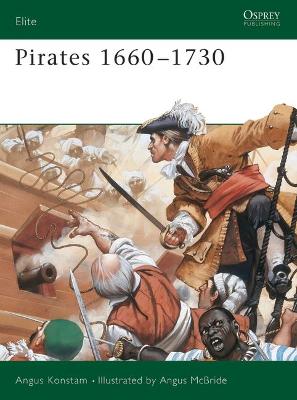Elite
4 primary works • 6 total works
Book 69
Before the era of great pirates in the early 18th century, there was an even more bloodthirsty phase of attacks in the Caribbean known as the 'Buccaneering Era'. For over 50 years, English, French and Dutch buccaneers launched a series of devastating attacks on Spanish towns, ports and shipping. Well-known buccaneers such as Captain Henry Morgan carried out their raids under the protection of the English crown, and in 1692, the French even used buccaneers to help its army capture the great Spanish city of Cartagena! Elite 67, 69 and 74 are also available in a single volume special edition as 'Pirates'.
Book 70
The swashbuckling English sea captains of the Elizabethan era were a particular breed of adventurer, combining maritime and military skill with a seemingly insatiable appetite for Spanish treasure. Angus Konstam describes these characters, including such well-known sea dogs as Francis Drake, Walter Raleigh, John Hawkins and Martin Frobisher, in colourful detail. For about 40 years they fought a private war with the Spanish, and while their seccess in defeating the Spanish Armada is well known, this book also covers their daring exploits in the New World.
Book 70
The swashbuckling English sea captains of the Elizabethan era were a particular breed of adventurer, combining maritime and military skill with a seemingly insatiable appetite for Spanish treasure. Angus Konstam describes these characters, including such well-known sea dogs as Francis Drake, Walter Raleigh, John Hawkins and Martin Frobisher. For about 40 years they fought a private war with the Spanish, and while their success in defeating the Spanish Armada is well known, this book also covers their exploits in the New World.
Book 74
Following the pirate scourge of the early 18th century, sea captains took to privateering as a means of making money. A form of nationally sponsored piracy, it reached its peak during the American Revolution, with the fledgling American navy relying on privateers to disrupt British shipping between England and the rebellious colonies. It details the privateer captains of the golden age of "state-sponsored piracy" - men such as John Paul Jones, Jean Lafitte, and Benito de Soto. It includes episodes such as Bonhomme Richard's epic battle with HMS Serapis.
v. 67
This book aims to portray an accurate picture of the pirates who sailed in the waters of the Caribbean and off the American coastline during the "golden age" of piracy and shows that the life of a pirate was nasty, brutish and short (with one or two notable exceptions). It traces the origins of piratical activity in the 16th century and examines the Boucaneer (Bucaneer) culture in Jamaica and Hispaniola. It details what drove individuals to a life of piracy, how they dressed, their weaponry, the ships they used and the codes by which they operated, for example, disciplinary procedures and the division of booty. It also catalogues the main characters active during this period: Edward "Blackbeard" Teach, Henry Morgan, Henry "Long Ben" Avery, Stede Bonnet, William Kidd, John "Calico Jack" Rackham and the female duo associated with him, Anne Bonny and Mary Read.
For the best part of three centuries the 'corsairs' or pirates from the 'Barbary' coasts of North Africa dominated the Western and Central Mediterranean. They made forays far into the Atlantic, preying on the shipping and coastal settlements across Christian Europe, ranging from Greece to West Africa and the British Isles. In the absence of organized European navies they seldom faced serious opposition, and the scope of their raiding was remarkable. As well as piracy and slave-raiding they fought as privateers, sharing their spoils with the rulers of the port-cities that provided them with ships, men, and a ready market. This book examines their development and their style of fighting, chronicles their achievements and failures, and illustrates their appearance and that of their ships, explaining why they were so feared and effective.





